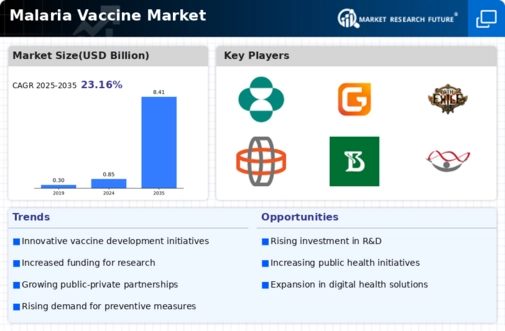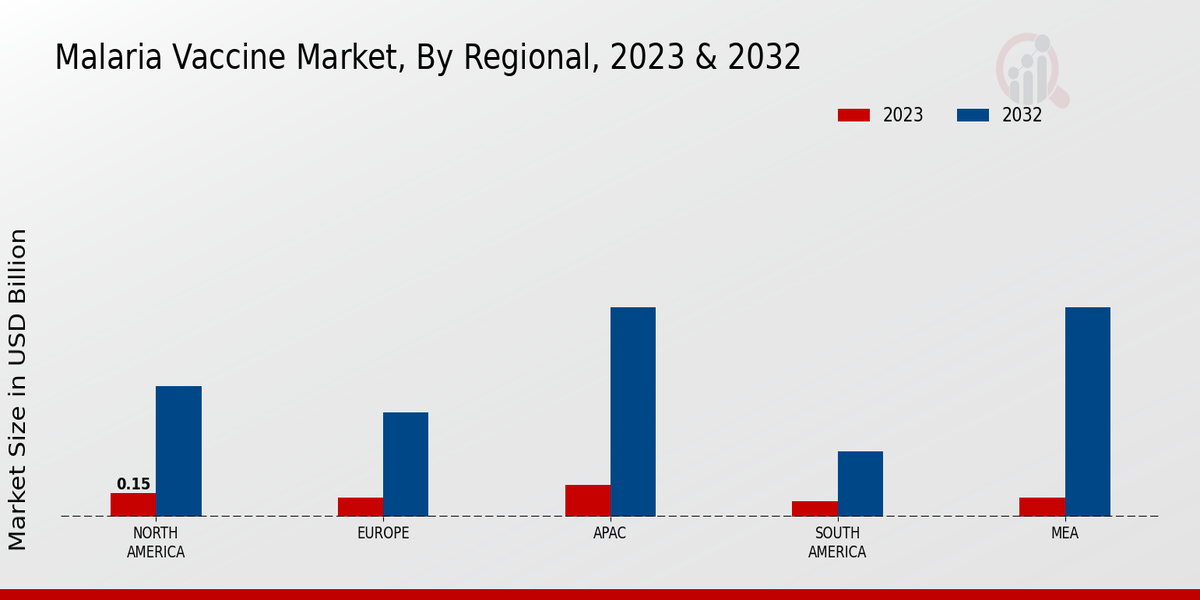Market Growth Projections
Rising Incidence of Malaria
The increasing incidence of malaria globally drives the demand for effective vaccines. In 2024, the Global Malaria Vaccine Market Industry is valued at approximately 0.85 USD Billion, reflecting the urgent need for innovative solutions to combat malaria. Regions such as Sub-Saharan Africa, which account for a significant proportion of malaria cases, highlight the necessity for vaccination programs. The World Health Organization reports millions of cases annually, emphasizing the critical role vaccines play in reducing transmission rates. As awareness grows, investments in vaccine development are likely to surge, propelling the market forward.
Government Initiatives and Funding
Government initiatives and funding significantly influence the Global Malaria Vaccine Market Industry. Various countries are prioritizing malaria eradication, leading to increased financial support for vaccine research and development. For instance, the Global Fund and other international organizations have committed substantial resources to combat malaria. This financial backing facilitates the advancement of vaccine candidates through clinical trials, enhancing their chances of approval. As governments recognize the economic burden of malaria, the allocation of funds is expected to rise, thereby fostering a conducive environment for vaccine innovation and market growth.
Increased Public Awareness and Education
Increased public awareness and education regarding malaria prevention contribute to the growth of the Global Malaria Vaccine Market Industry. Campaigns aimed at educating communities about the importance of vaccination are gaining traction, particularly in high-burden regions. As individuals become more informed about malaria's health implications, the demand for vaccines is expected to rise. Educational initiatives by governments and NGOs play a crucial role in dispelling myths and promoting vaccination as a key strategy for malaria control. This heightened awareness may lead to greater acceptance of vaccines, ultimately driving market expansion.
Technological Advancements in Vaccine Development
Technological advancements in vaccine development are transforming the Global Malaria Vaccine Market Industry. Innovative approaches, such as mRNA technology and viral vector platforms, are being explored to enhance vaccine efficacy and safety. These advancements enable faster development timelines and potentially more effective vaccines. For example, the use of recombinant proteins has shown promise in eliciting robust immune responses. As these technologies mature, they may lead to the introduction of new malaria vaccines, which could significantly impact market dynamics. The integration of cutting-edge technology is likely to attract investment and accelerate the pace of vaccine development.
Projected Market Growth and Investment Opportunities
The Global Malaria Vaccine Market Industry is projected to experience substantial growth, with estimates suggesting a market value of 8.41 USD Billion by 2035. This growth trajectory, characterized by a compound annual growth rate (CAGR) of 23.16% from 2025 to 2035, indicates a robust investment landscape. Investors are increasingly recognizing the potential returns associated with malaria vaccine development, particularly as global health priorities shift towards infectious disease control. This influx of capital is likely to accelerate research and development efforts, resulting in a diverse portfolio of vaccine candidates entering the market.























